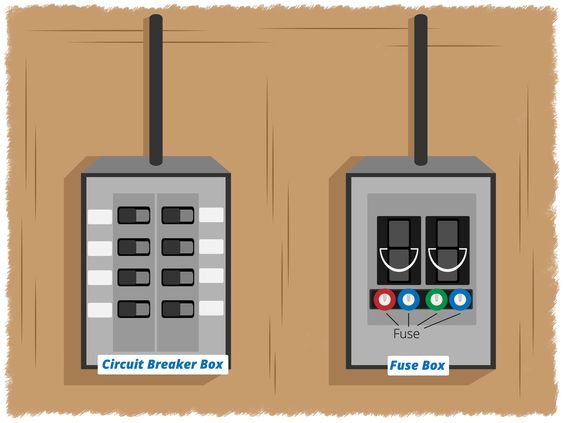A fuse box is the electrical hub of many homes. Often used interchangeably with circuit breaker, fuse boxes house screw-in fuses rather than circuits. The main purpose for both of these electrical systems is the same in every home—to provide protection for your home in the case of an electrical overload by shorting the fuse or circuit, depending on the type of box your home has.
The Difference Between Fuse Box and Circuit Breaker
If your home was built after 1965, there’s a big chance you have a circuit breaker rather than a fuse box, as this was the time we moved away from fuses and toward circuits. If your home was built before 1965 (and the electrical service hasn’t been updated) there’s a good chance you have a fuse box. Here’s the main difference.
While both control voltage flow, they do it in different ways. Circuit breakers do this with a series of switches or breakers that control individual circuits. If a breaker trips (or is overheated), the homeowner can simply reset it. Fuse boxes, on the other hand, have a series oof knobs rather than switches. These are fuses, which cannot simply be reset when they get overheated.
How Fuses Work
Fuses are pretty simple devices that come in varying types for both residential use and commerical. Typically they are ceramic, glass or porcelain screw-in plugs that fit into the fuse panel in threaded sockets. They work by conducting electrical flow through a thin metal strip inside of the fuse. If the electrical current exceeds a certain capacity, the metal strip overheats, melts and stopping the flow of electricity. Hopefully this measure will prevent electrical fires. Unlike circuit breakers, once a fuse “blows” or overheats, it cannot be reset. Blown fuses must be unscrewed and replaced with a brand new fuse that matches properly to the amperage of the circuit.
Have more questions about fuse boxes or circuit breakers? Our experienced team of licensed electricians are here to help. Give us a call. We can’t wait to help with your electrical needs.

